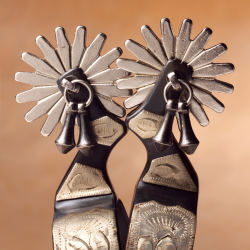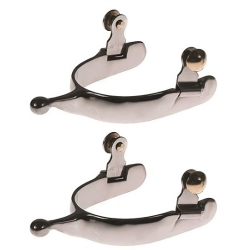Horses wearing blankets in the summer may seem counterintuitive, but there are actually valid reasons behind this practice. In this article, we will explore the natural cooling mechanisms of horses, the purpose of horse blankets in summer, how to choose the right blanket, and alternatives to blankets. By understanding these factors, horse owners can ensure the well-being and comfort of their equine companions during the hot summer months.
Key Takeaways
- Horses sweat to regulate their body temperature and cool down.
- Evaporation plays a crucial role in the cooling process for horses.
- Horses have natural adaptations to cope with hot weather.
- Horse blankets in summer provide protection from sunburn.
- Blankets can help prevent insect bites and maintain coat condition.
The Natural Cooling Mechanism of Horses
Sweating to Regulate Body Temperature
Horses have a remarkable natural cooling mechanism - sweating. When horses get hot, they start to sweat as a way to regulate their body temperature. Sweat is produced by sweat glands located all over their body, but especially in areas such as the neck, chest, and flanks. Sweating helps horses cool down because as the sweat evaporates from their skin, it takes away heat with it.
In fact, horses can produce a significant amount of sweat, with some studies estimating that an average-sized horse can produce up to 4 gallons of sweat per hour during intense exercise. This shows just how important sweating is for horses to maintain their body temperature in hot weather.
To support their natural cooling mechanism, it's crucial for horse owners to provide proper care and management, ensuring that horses have access to shade, fresh water, and appropriate ventilation.
The Role of Evaporation in Cooling
Evaporation is a crucial process for horses to regulate their body temperature. When horses sweat, the moisture on their skin evaporates, which helps to cool them down. Evaporation is an efficient cooling mechanism because it requires heat energy to convert liquid water into water vapor. As the sweat evaporates, it takes away heat from the horse's body, providing a cooling effect.
In fact, evaporation is responsible for the majority of heat loss in horses during hot weather. Research has shown that horses can lose up to 75% of their body heat through evaporation. This highlights the importance of this cooling mechanism in helping horses cope with high temperatures.
To enhance the evaporation process, it is essential to ensure proper airflow around the horse's body. This can be achieved by using lightweight and breathable horse blankets that allow air to circulate freely. By facilitating evaporation, these blankets help horses stay cool and comfortable in the summer heat.
How Horses Adapt to Hot Weather
Horses have developed several mechanisms to adapt to hot weather and regulate their body temperature. One important adaptation is sweating. When horses sweat, the moisture on their skin evaporates, which helps to cool them down. This is similar to how humans sweat to cool off.
Another way horses adapt to hot weather is by seeking shade and shelter. They instinctively find areas with shade or shelter, such as trees or barns, to protect themselves from the direct heat of the sun. This natural behavior helps them stay cooler and avoid overheating.
In addition to sweating and seeking shade, horses also adjust their eating and drinking habits in hot weather. They may drink more water to stay hydrated and eat smaller, more frequent meals to help regulate their body temperature.
It's important to provide horses with access to fresh water at all times, especially in hot weather. Dehydration can be a serious issue for horses and can lead to health problems.
To summarize, horses adapt to hot weather by sweating, seeking shade and shelter, and adjusting their eating and drinking habits.
The Purpose of Horse Blankets in Summer
Protection from Sunburn
Horse blankets in summer also serve the important purpose of protecting horses from sunburn. Sunburn can be a painful and uncomfortable condition for horses, especially those with light-colored or pink skin. The intense heat and UV rays from the sun can cause skin damage and even lead to skin cancer in extreme cases.
To prevent sunburn, horse blankets provide a physical barrier between the horse's skin and the sun. The blanket's fabric blocks out the harmful UV rays, reducing the risk of sunburn. Additionally, some blankets are specifically designed with UV protection properties to provide extra defense against the sun's rays.
It is important to choose a blanket that provides adequate coverage and fits the horse properly. A blanket that is too small or does not cover the horse's sensitive areas effectively may leave them vulnerable to sunburn. Properly fitting blankets with extended neck covers and belly flaps can offer comprehensive protection against sunburn.
Preventing Insect Bites
Insects can be a major nuisance for horses during the summer months. Not only do they cause irritation and discomfort, but they can also transmit diseases. To protect horses from insect bites, there are several measures that can be taken:
- Fly repellent: Applying a fly repellent spray or ointment can help deter insects from landing on the horse's skin.
- Fly masks: Fly masks cover the horse's face and eyes, providing protection from flies and other flying insects.
- Fly sheets: Fly sheets are lightweight blankets that cover the horse's body, providing a physical barrier against insects.
It's important to regularly check horses for any signs of insect bites or irritation, as prompt treatment can prevent further complications. Additionally, maintaining a clean and insect-free environment can help reduce the presence of insects around the horses.
Maintaining Coat Condition
Maintaining the coat condition of horses is essential for their overall health and appearance. Regular grooming plays a crucial role in keeping the coat clean and free from dirt and debris. This not only helps in maintaining a shiny and healthy coat but also promotes better air circulation, which is important for temperature regulation.
In addition to grooming, proper nutrition is key to maintaining a horse's coat condition. A balanced diet that includes essential nutrients such as omega-3 fatty acids and biotin can contribute to a lustrous and strong coat.
To further protect the coat from damage, limiting exposure to harsh elements is important. This includes providing shade and shelter to horses during extreme weather conditions, such as intense sunlight or heavy rain.
Lastly, regular veterinary care is crucial in maintaining a horse's coat condition. Regular check-ups and vaccinations can help prevent skin conditions and other health issues that may affect the coat.
Choosing the Right Blanket for Summer
Lightweight and Breathable Materials
When choosing a horse blanket for summer, it is important to prioritize lightweight and breathable materials. Breathable fabrics allow air to circulate, preventing heat buildup and promoting ventilation. This helps to keep the horse cool and comfortable even in hot weather.
One popular material for summer horse blankets is mesh, which is known for its excellent breathability. Mesh blankets have small holes that allow air to flow through, providing maximum ventilation. Another option is nylon, which is lightweight and quick-drying, making it ideal for hot and humid conditions.
To ensure the horse's comfort, it is also important to consider the weight of the blanket. A lightweight blanket will not weigh the horse down or cause excessive sweating. Look for blankets that are specifically designed for summer use and made from materials that prioritize breathability and comfort.
UV Protection
When choosing a horse blanket for summer, it is important to consider the level of UV protection it provides. Protecting the horse's skin from harmful UV rays is crucial to prevent sunburn and potential skin damage. Look for blankets that have a high UPF (Ultraviolet Protection Factor) rating, which indicates the level of protection against UV radiation. A higher UPF rating means better protection for your horse's sensitive skin.
Additionally, consider blankets that have a reflective or light-colored outer layer. These blankets can help to reflect the sun's rays and keep the horse cooler in hot weather. The reflective properties of the blanket can help to reduce the amount of heat absorbed by the horse's body, providing additional comfort and protection.
To ensure maximum UV protection, it is also important to properly fit the blanket to the horse. A well-fitted blanket will cover the horse's body adequately, minimizing exposure to the sun's rays. Take measurements of your horse and consult the manufacturer's sizing guide to find the right fit for your horse's body shape and size.
Proper Fit and Coverage
When choosing a horse blanket for summer, it is important to ensure a proper fit and coverage. Comfort is key, as a blanket that is too tight or too loose can cause discomfort and restrict movement. Additionally, the blanket should provide adequate coverage to protect the horse's body from the sun and insects.
To determine the right fit, measure your horse from the center of the chest to the tail. This measurement will help you select the appropriate blanket size. It is also important to consider the horse's build and shape when choosing a blanket. Some blankets come with adjustable straps or closures to ensure a snug fit.
Coverage is equally important. The blanket should cover the horse's back, sides, and chest, providing protection from the sun's harmful rays and preventing insect bites. Make sure the blanket extends past the withers and reaches the tail, without being too long or too short. Proper fit and coverage will ensure that the horse stays comfortable and protected throughout the summer.
Alternatives to Blankets for Summer
Shade and Shelter
Providing shade and shelter is an essential aspect of ensuring the well-being of horses during the summer months. Shade helps protect horses from the direct heat of the sun, reducing the risk of heat stress and sunburn. Shelter provides a safe and comfortable space where horses can escape the heat and seek relief from insects.
In addition to natural shade from trees or buildings, man-made shelters such as run-in sheds or stables can be used. These structures offer a cool and shaded environment for horses to rest and relax. It's important to ensure that the shelter is well-ventilated to allow for proper air circulation.
Water availability is also crucial when providing shade and shelter. Horses should have access to clean and fresh water at all times, especially during hot weather. This helps prevent dehydration and aids in regulating body temperature.
Tip: When setting up shade and shelter areas, consider the orientation of the structures to maximize shade coverage throughout the day.
Misting Systems
Misting systems are a popular choice for keeping horses cool in the summer. These systems work by releasing a fine mist of water into the air, which evaporates and helps to lower the surrounding temperature. Hydration is crucial for horses, and misting systems can help ensure that they stay hydrated even in hot weather.
Misting systems can be installed in horse stables or outdoor areas where horses spend time. They are often adjustable, allowing horse owners to control the intensity of the mist. It's important to note that misting systems should not be used excessively, as prolonged exposure to wet conditions can lead to skin issues such as fungal infections.
When using a misting system, it's essential to monitor the horse's behavior and body language. Some horses may not enjoy being sprayed with water and may become stressed or anxious. It's important to provide horses with the option to move away from the mist if they prefer.
In addition to misting systems, providing horses with access to shade and shelter is crucial. Horses should have a designated area where they can seek relief from the sun and heat. This can be a stable, a shaded paddock, or a tree-lined area. Proper ventilation is also important to ensure that the air circulates and helps to cool the horses naturally.
Overall, misting systems can be an effective tool for keeping horses cool in the summer, but they should be used in moderation and in conjunction with other cooling methods.
Fly Sheets and Masks
Fly sheets and masks are popular alternatives to blankets for summer. These protective gear items are designed to keep flies and other insects away from the horse, providing relief from constant buzzing and biting. Fly sheets are lightweight and breathable, allowing air to circulate and prevent overheating. They are typically made from mesh or other fine materials that create a barrier against insects while still allowing the horse's skin to breathe.
Fly masks, on the other hand, are specifically designed to protect the horse's face and eyes from flies. They cover the horse's head, leaving openings for the eyes, ears, and sometimes the nose. Fly masks are often made from a fine mesh material that provides visibility while still keeping flies away.
Using fly sheets and masks can help keep horses comfortable and protected from annoying insects during the summer months.
Conclusion
In conclusion, the use of blankets on horses during the summer serves multiple purposes. It helps regulate their body temperature, protect them from insects, and prevent sunburn. While some may question the need for blankets in warm weather, it is important to understand the physiological needs of horses and the benefits that blankets provide. By providing comfort and protection, blankets contribute to the overall well-being and health of horses during the summer months.
Frequently Asked Questions
Do horses really need to wear blankets in the summer?
Horses do not necessarily need to wear blankets in the summer. However, blankets can provide protection from sunburn, insect bites, and help maintain coat condition.
What is the purpose of horse blankets in the summer?
The purpose of horse blankets in the summer is to provide protection and comfort to the horse. They can protect against sunburn, prevent insect bites, and help maintain the horse's coat condition.
What materials are best for summer horse blankets?
The best materials for summer horse blankets are lightweight and breathable fabrics. These materials allow for proper air circulation and help prevent overheating.
Do horse blankets provide UV protection?
Yes, some horse blankets are designed to provide UV protection. These blankets have special coatings or fabrics that block harmful UV rays from the sun.
How do I choose the right size horse blanket for summer?
To choose the right size horse blanket for summer, measure your horse from the center of the chest to the tail. The blanket should fit snugly without restricting movement.
Are there alternatives to using horse blankets in the summer?
Yes, there are alternatives to using horse blankets in the summer. Providing shade and shelter, using misting systems, and using fly sheets and masks are some alternatives to consider.














































